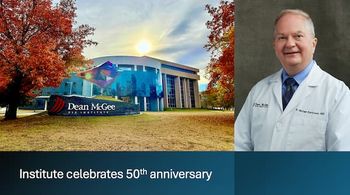
Case study: Sebaceous gland carcinoma with no eyelid involvement
Case study looks at a 90-year-old patient with a sebaceous gland carcinoma with corneal and bulbar conjunctival involvement, but the eyelid was spared.
Or Ben-Shaul, MD, an intern at the Carmel Medical Center, Haifa, Israel, reported the case of a 90-year-old patient with a sebaceous gland carcinoma with corneal and bulbar conjunctival involvement, but the eyelid was spared.
A tumor arising primarily from the bulbar conjunctiva and corneal involvement is an extremely rare event, he explained, and noted that sebaceous gland carcinoma generally arises from the meibomian glands or the glands of Zeis in the eyelid.
In the current case, the patient presented with an ulcerative, painless, conjunctival-corneal mass in the left eye that developed over a 2-month period, Ben-Shaul reported. The development ultimately interfered with the patient’s ability to close the eyelid.
Surgical removal of the tumor was ultimately successful. The surgery included a 2-minute application of mitomycin-C 0.02% in the tumor bed. Histopathology diagnosed a grade 3 sebaceous gland carcinoma.
Staining with hematoxylin and eosin showed increased pleomorphic basophils and a high mitosis rate.
The cytoplasm of the cells contained foam. The epithelium was found to be involved and positive cytokeratin-7 staining indicated that the tumor originated in the visceral endothelium.
The postoperative treatment included application of topical mitomycin-C every 6 hours for 3 weeks. By 6 months postoperatively, the tumor had not recurred.
Ben-Shaul advised considering sebaceous carcinoma in the diagnosis of corneal-scleral ulcerative masses despite the fact that the eyelid is not involved.
He pointed out that topical mitomycin-C may be an effective treatment in such cases.
Ben-Shaul presented this case at the American Society of Cataract and Refractive Surgery on July 23-27, 2021. He has no financial interest in this subject matter.
Newsletter
Don’t miss out—get Ophthalmology Times updates on the latest clinical advancements and expert interviews, straight to your inbox.
















































.png)


